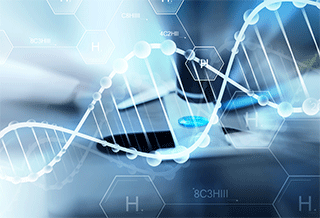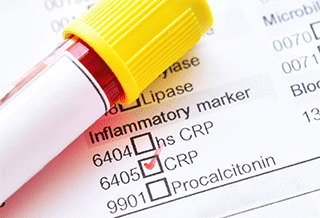Introduction

A biomarker (short for biological marker) is an objective measure that captures what is happening in a cell or an organism at a given moment. Biomarkers can serve as early warning systems for your health. For example, high levels of lead in the bloodstream may indicate a need to test for nervous system and cognitive disorders, especially in children. High cholesterol levels are a common biomarker for heart disease risk.
Many biomarkers come from simple measurements made during a routine doctor visit, like blood pressure or body weight. Other biomarkers are based on laboratory tests of blood, urine, or tissues. Some capture changes at the molecular and cellular level by looking at genes or proteins.
Biomarkers play an important role in illuminating relationships among environmental exposures, human biology, and disease. Scientists can use biomarkers to better understand fundamental biological processes, advance exposure science, and turn research findings into practical medical and public health applications.
NIEHS supports the development of biomarkers that measure:
- Exposure – what are the levels of environmental chemicals inside the body?
- Response – are there biological indicators of adverse health effects in people who encounter certain environmental factors?
- Susceptibility – do variations in genes place a person at higher risk to health effects from an environmental exposure?
What is NIEHS Doing?
NIEHS leads studies that transform biomarker research in the following ways:
- Identifying and validating new biomarkers that can be used in studies of environmental disease.
- Defining and strengthening the link between specific environmental factors and health outcomes to uncover underlying biological processes.
- Classifying subgroups of biomarkers within complex disease types, such as cancer, to develop and target appropriate treatments.
- Discovering why some people have more or fewer health effects than other people who encounter certain environmental exposures.
Examples of NIEHS-supported research discoveries, below, show the range of biomarker research advances made by extramural and intramural scientists.

- Blood chemicals and respiratory disease – A chemical in blood cells called cholestenoic acid is a new biomarker for acute respiratory distress syndrome. The respiratory condition is deadly in 30–40% of cases, yet no clinical biomarkers existed.1
- Green spaces and better heart health – Biomarkers of cardiovascular health were used to compare groups who lived in different neighborhoods. Living in areas with more green spaces may reduce the risk of cardiovascular disease by decreasing the body’s stress and boosting its ability to repair blood vessels.2
- Hormones and breast cancer – Blood levels of anti-Mullerian hormone (AMH), a hormone produced by the ovaries that normally declines significantly prior to menopause, is a biomarker for risk of breast cancer in premenopausal women.3
- Baby teeth and early life environmental exposures – The Icahn School of Medicine at Mt. Sinai reported that baby teeth from children with autism spectrum disorder (ASD) contain more lead and lower amounts of the essential nutrients zinc and manganese than baby teeth from children without ASD. The findings suggest that ASD risk may be influenced by early life exposures to metals and how a child’s body processes them.4
- Sequencing and exposure to fungal toxins – The Massachusetts Institute of Technology and the University of Washington developed a new DNA sequencing technique that can detect exposure to aflatoxin B1, a substance produced by fungi that is a known liver carcinogen. Their technique could lead to early detection and management of people at high risk of developing liver cancer.5
- Chemicals in plastics and birth outcomes – Blood levels of bisphenol A (BPA), an endocrine-disrupting chemical found in many plastics, were linked to inflammation and oxidative stress, potentially serving as a biomarker for adverse birth outcomes such as preterm birth.6
- DNA and childhood asthma risk – Patterns of DNA methylation, which are chemical tags that attach to DNA, may be a biomarker that indicates a newborn’s chance of developing asthma.7
- Toenails and arsenic – The Dartmouth College Superfund Research Program Center showed how toenails can be used as a reliable biomarker of exposure to arsenic, indicating that dietary exposure to arsenic could be considered a health risk.8
-
Madenspacher JH, Stapleton RD, Suratt BT, Dixon AE, Lih FB, Lowe JM, Mould KJ, Janssen WJ, Morrell ED, Wurfel MM, Garantziotis S, Tomer KB, Fessler MB. 2018. Cholestenoic acid is a prognostic biomarker in acute respiratory distress syndrome. Journal of Allergy Clinical Immunology 143(1):440-442. [Abstract Madenspacher JH, Stapleton RD, Suratt BT, Dixon AE, Lih FB, Lowe JM, Mould KJ, Janssen WJ, Morrell ED, Wurfel MM, Garantziotis S, Tomer KB, Fessler MB. 2018. Cholestenoic acid is a prognostic biomarker in acute respiratory distress syndrome. Journal of Allergy Clinical Immunology 143(1):440-442.]
-
Yeager R, Riggs DW, DeJarnett N, Tollerud DJ, Wilson J, Conklin DJ, O'Toole TE, McCracken J, Lorkiewicz P, Xie Z, Zafar N, Krishnasamy SS, Srivastava S, Finch J, Keith RJ, DeFilippis A, Rai SN, Liu G, Bhatnagar A. 2018. Association Between Residential Greenness and Cardiovascular Disease Risk. Journal of the American Heart Association 7(24):e009117. [Abstract Yeager R, Riggs DW, DeJarnett N, Tollerud DJ, Wilson J, Conklin DJ, O'Toole TE, McCracken J, Lorkiewicz P, Xie Z, Zafar N, Krishnasamy SS, Srivastava S, Finch J, Keith RJ, DeFilippis A, Rai SN, Liu G, Bhatnagar A. 2018. Association Between Residential Greenness and Cardiovascular Disease Risk. Journal of the American Heart Association 7(24):e009117.]
-
Nichols HB, Baird DD, Stanczyk FZ, Steiner AZ, Troester MA, Whitworth KW, Sandler DP. 2015. Anti-mullerian hormone concentrations in premenopausal women and breast cancer risk. Cancer Prevention Research 8(6):528-534. [Abstract Nichols HB, Baird DD, Stanczyk FZ, Steiner AZ, Troester MA, Whitworth KW, Sandler DP. 2015. Anti-mullerian hormone concentrations in premenopausal women and breast cancer risk. Cancer Prevention Research 8(6):528-534.]
-
Arora M, Reichenberg A, Willfors C, Austin C, Gennings C, Berggren S, Lichtenstein P, Anckarsater H, Tammimies K, Bolte S. 2017. Fetal and postnatal metal dysregulation in autism. Nature Communications 8:15493. doi: 10.1038/ncomms15493 [Online 1 Jun 2017] [Abstract Arora M, Reichenberg A, Willfors C, Austin C, Gennings C, Berggren S, Lichtenstein P, Anckarsater H, Tammimies K, Bolte S. 2017. Fetal and postnatal metal dysregulation in autism. Nature Communications 8:15493. doi: 10.1038/ncomms15493 [Online 1 Jun 2017]]
-
Chawanthayatham S, Valentine CC 3rd, Fedeles BI, Fox EJ, Loebd LA, Levine SS, Slocum SL, Wogan GN, Croy RG, Essigmann JM. 2017. Mutational spectra of aflatoxin B1 in vivo establish biomarkers of exposure for human hepatocellular carcinoma. Proceedings of the National Academy of Science of the U.S.A 114(15):E3101âE3109. [Abstract Chawanthayatham S, Valentine CC 3rd, Fedeles BI, Fox EJ, Loebd LA, Levine SS, Slocum SL, Wogan GN, Croy RG, Essigmann JM. 2017. Mutational spectra of aflatoxin B1 in vivo establish biomarkers of exposure for human hepatocellular carcinoma. Proceedings of the National Academy of Science of the U.S.A 114(15):E3101âE3109.]
-
Ferguson KK, Cantonwine DE, McElraith TF, Mukherjee B, Meeker JD. 2016. Repeated measures analysis of associations between urinary bisphenol-A concentrations and biomarkers of inflammation and oxidative stress during pregnancy. Reproductive Toxicology 66:93-98. doi: 10.1016/j.reprotox.2016.10.002. [Online 14 Oct 2016] [Abstract Ferguson KK, Cantonwine DE, McElraith TF, Mukherjee B, Meeker JD. 2016. Repeated measures analysis of associations between urinary bisphenol-A concentrations and biomarkers of inflammation and oxidative stress during pregnancy. Reproductive Toxicology 66:93-98. doi: 10.1016/j.reprotox.2016.10.002. [Online 14 Oct 2016]]
-
Reese SE, Xu CJ, den Dekker HT, Lee MK, Sikdar S, Ruiz-Arenas C, Merid SK, Rezwan FI, Page CM, Ullemar V, Melton PE, Oh SS, Yang IV, Burrows K, Soderhall C, Jima DD, Gao L, Arathimos R, Kuppers LK, Wielscher M, Rzehak P, Lahti J, Laprise C, Madore AM, Ward J, Bennett BD, Wang T, Bell DA, BIOS consortium, Vonk JM, Haberg SE, Zhao S, Karlsson R, Hollams E, Hu D, Richards AJ, Bergstrom A, Sharp GC, Felix JF, Bustamante M, Gruzieva O, Maguire RL, Gilliland F, Baiz N, Nohr EA, Corpeleijn E, Sebert S, Karmaus W, Grote V, Kajantie E, Magnus MC, Ortqvist AK, Eng C, Liu AH, Kull I, Jaddoe VWV, Sunyer J, Kere J, Hoyo C, Annesi-Maesano I, Arshad SH, Koletzko B, Brunekreef B, Binder EB, Raikkonen K, Reischl E, Holloway JW, Jarvelin MR, Snieder H, Kazmi N, Breton CV, Murphy SK, Pershagen G, Anto JM, Relton CL, Schwartz DA, Burchard EG, Huang RC, Nystad W, Almqvist C, Henderson AJ, Melen E, Duijts L, Koppelman GH, London SJ. 2018. Epigenome-wide meta-analysis of DNA methylation and childhood asthma. Journal of Allergy and Clinical Immunology 143(6):2062-2074. [Abstract Reese SE, Xu CJ, den Dekker HT, Lee MK, Sikdar S, Ruiz-Arenas C, Merid SK, Rezwan FI, Page CM, Ullemar V, Melton PE, Oh SS, Yang IV, Burrows K, Soderhall C, Jima DD, Gao L, Arathimos R, Kuppers LK, Wielscher M, Rzehak P, Lahti J, Laprise C, Madore AM, Ward J, Bennett BD, Wang T, Bell DA, BIOS consortium, Vonk JM, Haberg SE, Zhao S, Karlsson R, Hollams E, Hu D, Richards AJ, Bergstrom A, Sharp GC, Felix JF, Bustamante M, Gruzieva O, Maguire RL, Gilliland F, Baiz N, Nohr EA, Corpeleijn E, Sebert S, Karmaus W, Grote V, Kajantie E, Magnus MC, Ortqvist AK, Eng C, Liu AH, Kull I, Jaddoe VWV, Sunyer J, Kere J, Hoyo C, Annesi-Maesano I, Arshad SH, Koletzko B, Brunekreef B, Binder EB, Raikkonen K, Reischl E, Holloway JW, Jarvelin MR, Snieder H, Kazmi N, Breton CV, Murphy SK, Pershagen G, Anto JM, Relton CL, Schwartz DA, Burchard EG, Huang RC, Nystad W, Almqvist C, Henderson AJ, Melen E, Duijts L, Koppelman GH, London SJ. 2018. Epigenome-wide meta-analysis of DNA methylation and childhood asthma. Journal of Allergy and Clinical Immunology 143(6):2062-2074.]
-
Cottingham KL, Karimi R, Gruber JF, Zens MS, Sayarath V, Folt CL, Punshon T, Morris JS, Karagas, MR. Diet and toenail arsenic concentrations in a New Hampshire population with arsenic-containing water. Nutrition Journal 12:149. doi: 10.1186/1475-2891-12-149 [Online 16 Nov 2013] [Abstract Cottingham KL, Karimi R, Gruber JF, Zens MS, Sayarath V, Folt CL, Punshon T, Morris JS, Karagas, MR. Diet and toenail arsenic concentrations in a New Hampshire population with arsenic-containing water. Nutrition Journal 12:149. doi: 10.1186/1475-2891-12-149 [Online 16 Nov 2013]]
NIEHS Research Efforts
- Biomarkers of Exposure to Hazardous Substances – The University of California at Davis, Superfund Research Program connected hazardous substance exposures to effects on the body with the goal of developing new biomarkers for studies.
- E-Cigs and Smoking Study – This NIEHS study is developing new biomarkers related to tobacco smoke or e-cigarette use.
- Environment and Reproductive Health (EARTH) – Led by the Harvard T. H. Chan School of Public Health, this project is gathering more than 50 biomarkers of environmental chemicals to understand their effects on fertility, pregnancy outcomes, and children’s health.
Further Reading
Stories from the Environmental Factor (NIEHS Newsletter)
- For Clues on Cancer, Scientists Work to Decipher Exposure Fingerprints (August 2023)
- Biomarker Suggests Severity of COVID-19 Respiratory Distress (May 2021)
- Biological Signs of Disease Examined at National Academies Event (September 2020)
Related Health Topics
This content is available to use on your website.
Please visit NIEHS Syndication to get started.

